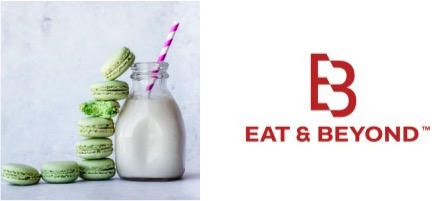Steep dairy prices are disrupting operations in the sector but creating vibrant new opportunities for the plant-based segment. The demand for plant proteins from oats, soy and almonds and niche ingredients are set to gain traction. FoodIngredientsFirst speaks to Michael Aucoin, CEO of plant-based producer Eat & Beyond, about the changes enacted in these markets.
“The steep increase consumers are experiencing in the price of dairy products continues to create opportunities for plant-based dairy alternatives. This is particularly true in Canada, where dairy producers do not benefit from government subsidies as they do in the US,” Aucoin outlines.
“As such, in both markets, we see the price gap between dairy and dairy alternatives narrowing, or in some cases, plant-based alternatives even coming in as more affordable.”
“This gap will continue to narrow or close as plant-based alternatives increasingly benefit from economies of scale as production volumes increase, lowering unit costs and improving their cost-competitiveness.”
Rate of inflation continues to climb
The Bureau of Labor Statistics reported the highest prices for US average retail in May. The 8.6% all items index increase is the largest 12-month increase since December 1981. In addition, the annual rate of retail price inflation has seen a steady upward acceleration, month-on-month.
The price hikes are making dairy alternatives more popular for consumers. Eat & Beyond, which invests in companies in the plant-based and alternative protein sector, such as Beyond Moo Foods (oat-based dairy), Banana Wave (banana milk beverages) and TurtleTree (cultured milk, breast milk and meat), has watched the sector closely.Nut-based alternatives are gaining traction with consumers.
“While plant-based options are not immune to inflationary pressures, the continued growth of the sector will increasingly unlock economies of scale, lowering unit costs over time, or at least blunting the impact of the general inflation that we see throughout the market. As such, the plant-based consumer could face reduced inflationary pressure,” continues Aucoin.
He notes, however, that in some plant-based categories, where the products trade at a premium to animal-based products, lower available disposable income could lead to reduced growth. “It will be incumbent on the manufacturers in these categories to rapidly find ways to achieve economies of scale to cut unit production costs,” he says.
Up-and-coming ingredients trio
Oats, soy and almonds are set to rise in importance if dairy prices continue to increase while niche products also come into sharper focus.
“We still see oats as the primary growth driver in plant-based dairy formulations. Both soy and almond remain material players in the category but are not experiencing the same growth as oat,” Aucoin predicts.
“Niche products such as hazelnut, macadamia and walnut-based alternatives are showing strong growth but on a smaller scale, and not contributing to category growth as strongly as oat.”
Eat & Beyond has seen a significant opportunity in products designed to increase occasions for consumption. The company has two portfolio companies in the sector that are launching plant-based milk alternatives created for convenient on-the-go consumption and in a suitable format for children.
“As we see substantial inflationary pressure across all categories, brands in the plant-based sector have the opportunity to leverage any increased consumer demand that they may experience to achieve economies of scale that can help them to move toward price parity more quickly than they might have otherwise been able to,” says Aucoin.



























